In 1979, Alfredo Silva Estrada published Variations on Reticuláreas: in Homage to Gego, a lyrical text in which the Venezuelan poet praised the sculptural work of Gego (1912–94). A relatively obscure figure in the history of art, Gego was, during her lifetime, a household name in post-war Latin America, most notably in Venezuela – the country that became her adopted country after she fled Nazi Germany in 1939.
‘Gego: Measuring Infinity’, first presented at the Solomon R. Guggenheim Museum in New York and now at the Guggenheim Bilbao, focuses on the artist’s inventive approach to her medium. Her celebrated Reticuláreas series of mesh sculptures, to which Estrada’s text refers, expresses the artist’s fascination with the boundless possibilities of line. The suspended skeletal sculptures dissect the gallery space as they cascade from the ceiling. Gego saw her sculptures almost as living things – as the curator Geaninne Gutiérrez-Guimarães writes in the exhibition catalogue, she demanded that they have enough ‘space to breathe’, as if sensitive to their surroundings. Indeed, as you wander around the Reticuláreas, the parallel lines appear to shimmer and vibrate with movement. In the words of Estrada, they conjure the image of an ‘infinity enveloping between the measured strings’.
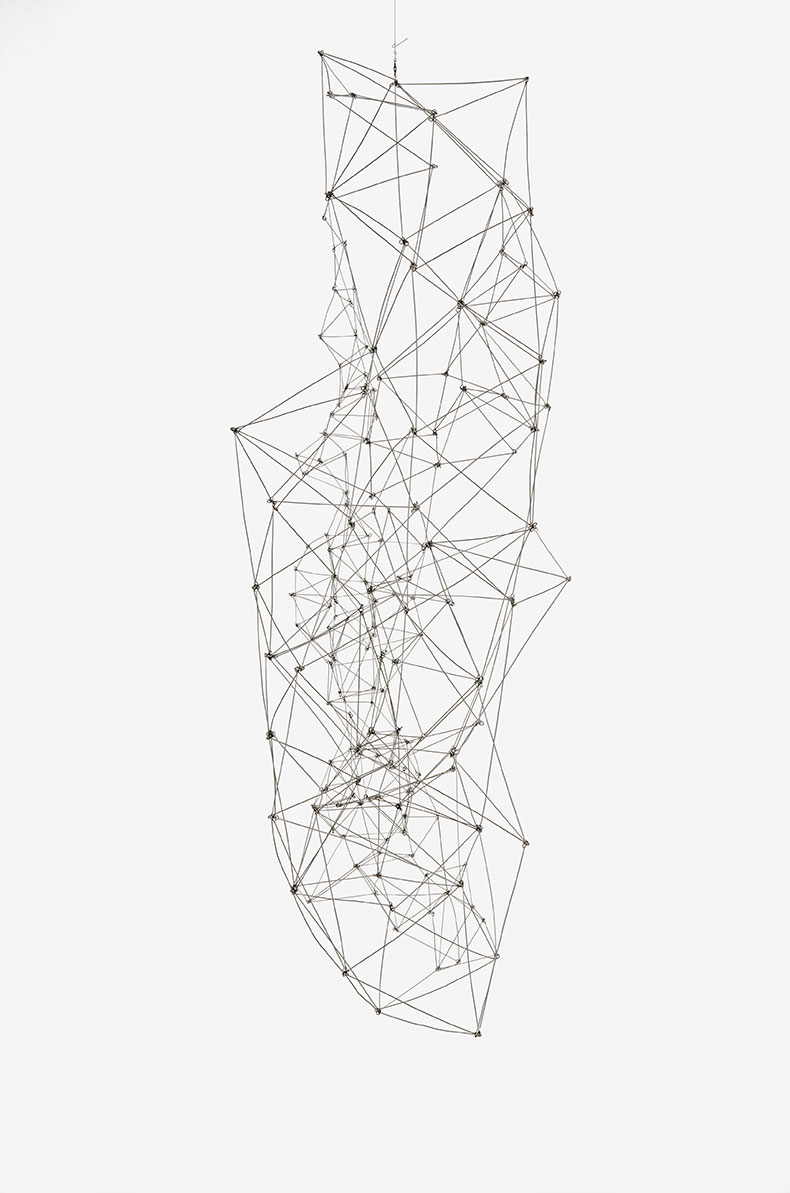
Stream Reticulárea (Chorro Reticulárea) (1988), Gego. Colección Mercantil, Caracas. Photo: Walter Otto; courtesy Colección Mercantil, Caracas; © Fundación Gego
Born Gertrud Goldschmidt to a liberal Jewish family in Hamburg, Gego initially trained as an architect and engineer at the Technische Hochschule Stuttgart (now Universität Stuttgart). In 1938, on the brink of war, she was advised by her professor Paul Bonatz to leave Germany, but due to the difficulty of obtaining a visa, she remained while her family members fled for England. Other relatives would not survive.
In 1939, when she eventually arrived in Venezuela – the only country that offered her a visa – she knew nothing about the culture and couldn’t speak a word of Spanish. Nevertheless, she was able to find employment at various architecture and city planning studios in Caracas and adopted the nickname Gego, a contraction of her birthname that was easier for the locals to pronounce. In 1940, she married the German entrepreneur Ernst Gunz. The couple had two children and set up an open home workshop, known as Taller Gunz, for which Gego designed lamps and wooden furniture until 1944.
By the end of the 1940s, perhaps due to the limited opportunities available for women at the time combined with the challenges of being an immigrant, Gego had turned her attention away from architecture. She divorced Gunz in 1951 and met the artist and publicist Gerd Leufert who became her lifelong companion. In 1953, they moved to the town of Tarmas on the Caribbean coast where she would commit herself fully to making art Except for one work on paper from 1951, ‘Measuring Infinity’ focuses on Gego’s artistic production during this period, when she was in her forties.
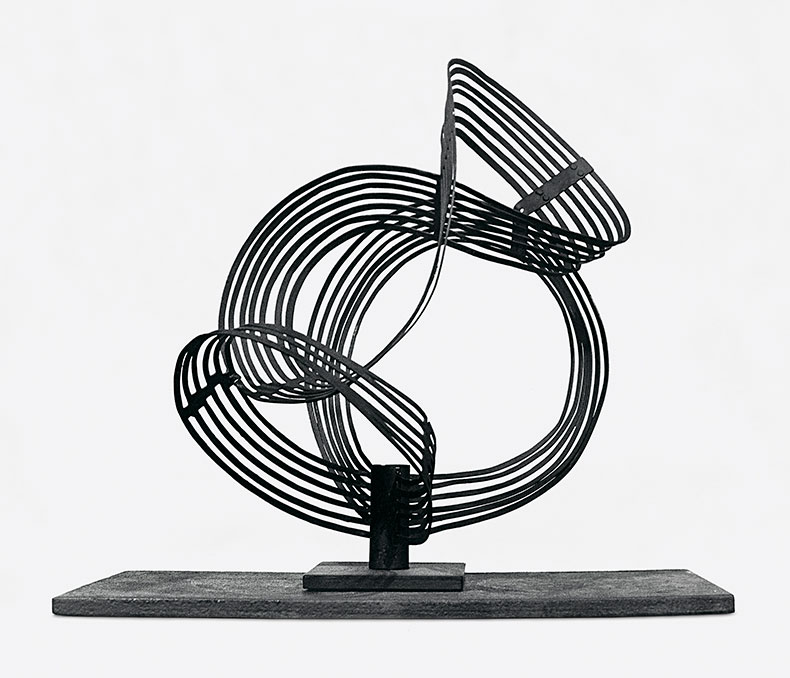
12 Concentric Circles (12 Círculos Concéntricos) (1957), Gego. Private collection, Austin. Photo: Tasnadi; courtesy Archivo Fundación Gego; © Fundación Gego
The exhibition opens with Eight Squares (1961), an imposing, painted iron work of geometric gridded lines that appear to overlap and harmonise as viewers orbit the sculpture. Nearby, in 12 Concentric Circles (1957), dramatic, sweeping twists of painted black aluminium convey an elegant sense of movement. Here, as elsewhere, Gego’s deployment of non-organic materials – metal scraps, iron, nylon cords and aluminium wire – is not just an artistic affect but also a reflection of the industrialisation of post-war Venezuela as it became one of the world’s most important oil exporters.
In other areas of the exhibition, Gego’s etchings, lithographs and works on paper of the same period share a preoccupation with the harmony of twisting, parallel lines in space. As Gutiérrez-Guimarães explained at the press opening, Gego derived meaning from the notion of making the ‘invisible, visible’. She found beauty in the tension between void and matter.
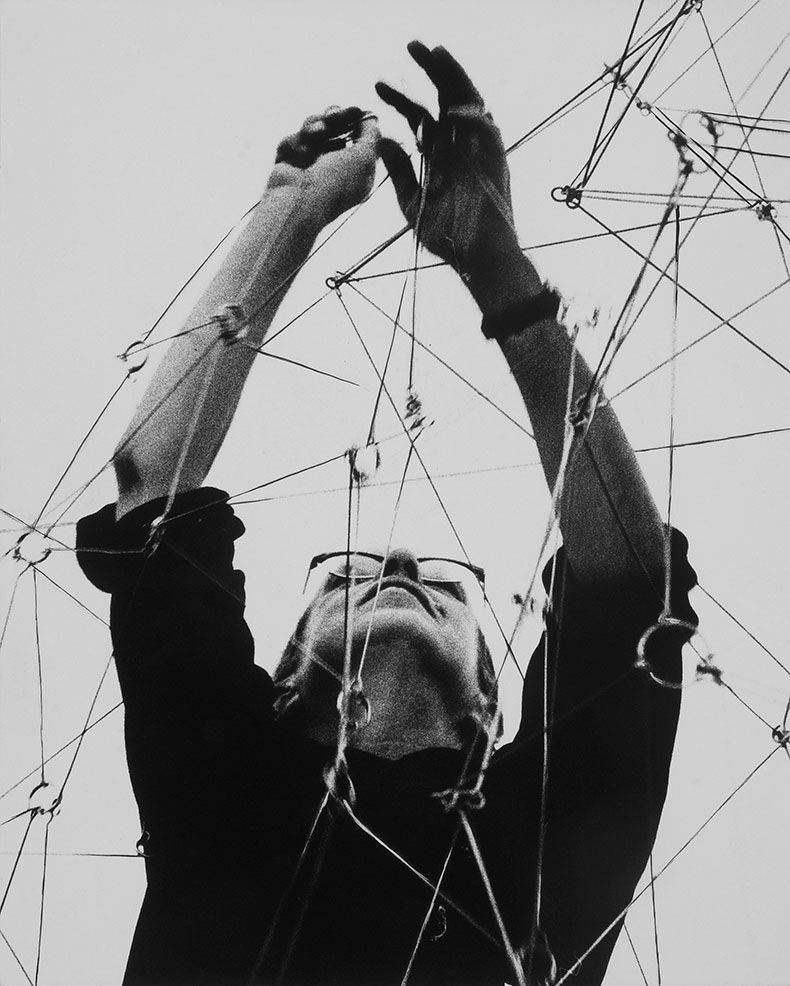
Gego installing Reticulárea at the Fine Arts Museum, Caracas. Photo: Juan Santana; © Fundación Gego
Throughout the late 1960s and ’70s, Gego made the Reticuláreas series. By manipulating a line in space – practising a kind of three-dimensional drawing – she created sprawling and expansive hanging sculptures reminiscent of nets or webs. In June 1969, she earned critical acclaim for these works with her ambitious installation at the Museum of Fine Arts in Caracas. Filling an entire quadrangular room, the work appeared to have no beginning or end, transforming the space into a tangled constellation of wire. ‘I was interested in the transparency of volume, so that a form could be appreciated fully from all angles of observation,’ Gego later said.
As the Guggenheim exhibition demonstrates through some 150 works ranging from the 1950s to the early ’90s, Gego’s style gradually evolved from austere, rational structures to something more playful, as seen in her more colourful and subtly humorous series Bugs (1987–91) and Small Bugs (1987–89). Over the years, she slowly liberated herself from the strict geometry of the grid. In the late work Small Bug 89/22, copper wire is chaotically wrapped around the sculpture’s plinth, evoking organic matter.
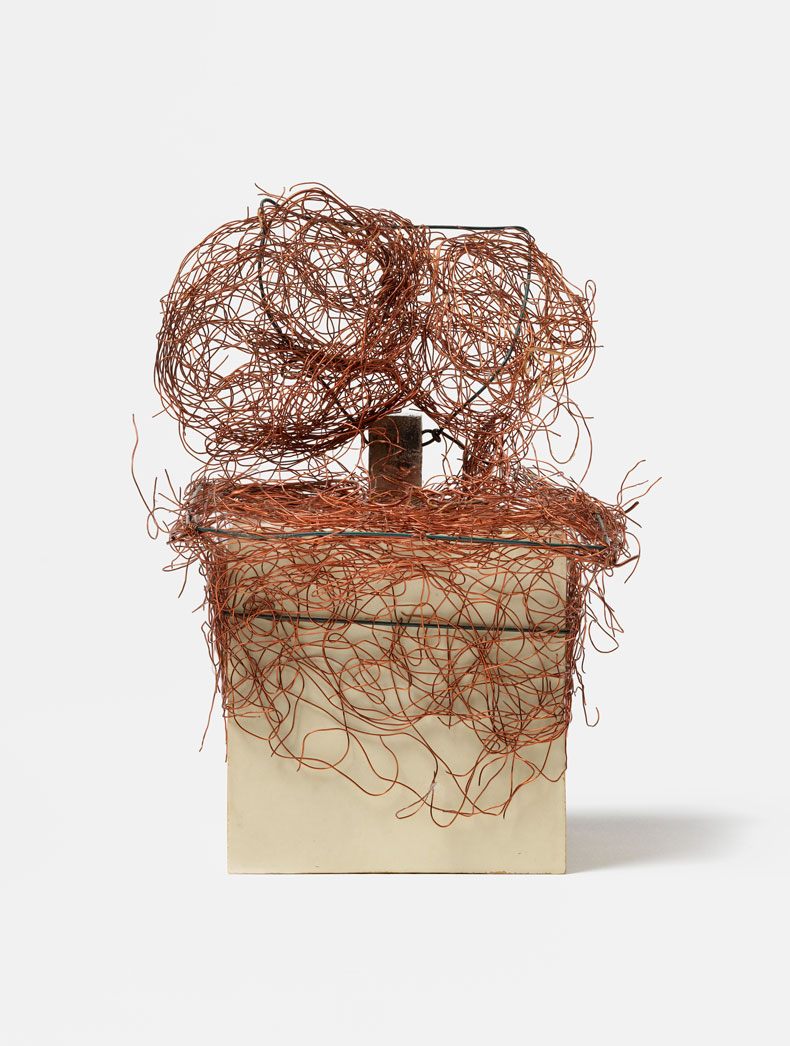
Small Bug 89/22 (Bichito 89/22) (1989), Gego. MACBA Collection, MACBA Consortium. Photo: PhotoGasull; courtesy MACBA Museu d’Art Contemporani de Barcelona; © Fundación Gego
This change in approach perhaps reflected her own pursuit of autonomy. Gego’s life was as full of twists and turns as her art. After leaving Germany for Venezuela, she moved temporarily to New York, where she enrolled at the Pratt Institute, and later to Los Angeles where she tried her hand at printmaking at the Tamarind Lithography Workshop. She eventually returned to Tarmas and later Caracas, where she died in 1994.
Like the delicate lines she compulsively knotted and twisted into three-dimensional embroideries, Gego was constantly remoulding herself. Through it all, she found joy in the simple act of making, constructing a world in which the possibilities of line and life were infinite.
‘Gego: Measuring Infinity’ is at the Guggenheim Museum, Bilbao until 2 April 2024.
Unlimited access from just $16 every 3 months
Subscribe to get unlimited and exclusive access to the top art stories, interviews and exhibition reviews.

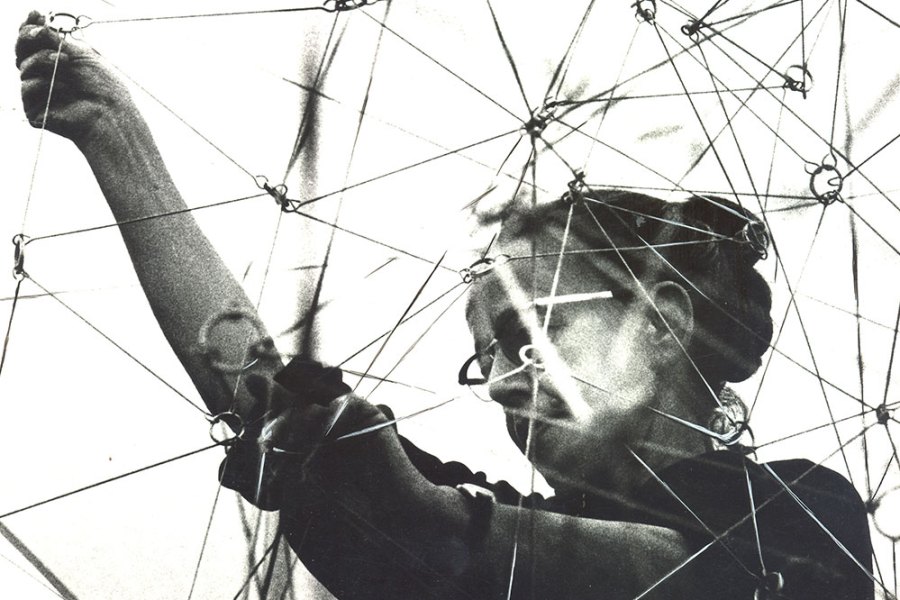
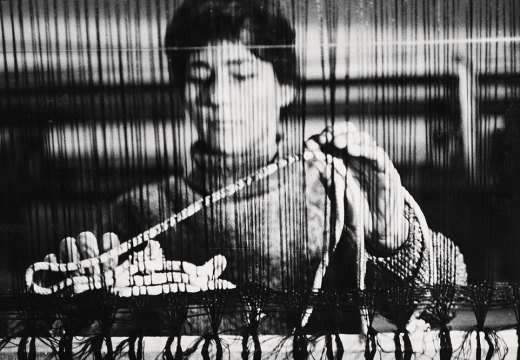
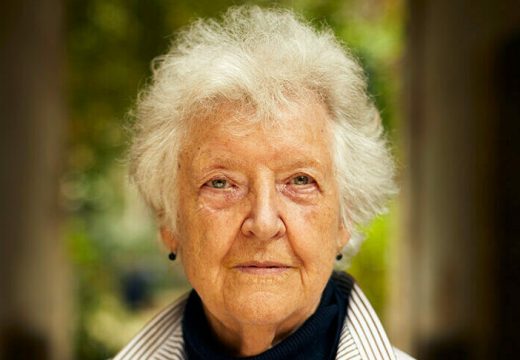
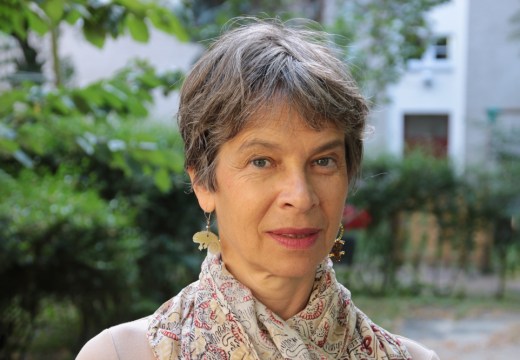









![Masterpiece [Re]discovery 2022. Photo: Ben Fisher Photography, courtesy of Masterpiece London](http://www.apollo-magazine.com/wp-content/uploads/2022/07/MPL2022_4263.jpg)
It’s time for the government of London to return to its rightful home